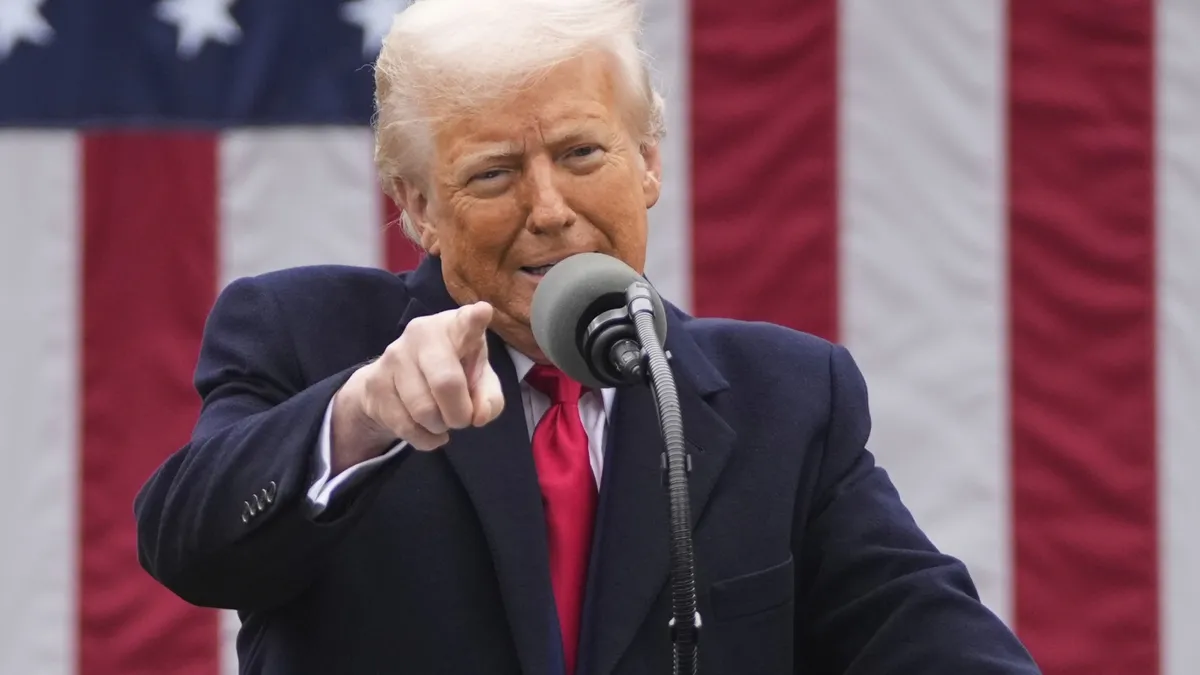
Former President Donald Trump has frequently boasted about the revenue generated from tariffs, highlighting the funds collected from American businesses that ultimately pass these costs onto consumers. Recently, Trump proposed the idea of distributing this revenue back to Americans in the form of $2,000 payments. However, this proposal raises significant challenges for the administration, particularly in terms of feasibility and alignment with their existing policies.
Trump's suggestion is far from a detailed plan, but it does present multiple hurdles. Critics argue that the estimated costs of such a plan may significantly exceed Trump's projections. Interestingly, the administration has already stated that the proposed plan would not involve direct payments to taxpayers, contradicting Trump's claims. During a press briefing, Trump stated, "We're going to issue a dividend to our middle-income and lower-income people of about $2,000," while also mentioning intentions to use the remaining tariff revenues to reduce national debt.
According to budget experts, the feasibility of this plan is questionable. Erica York, Vice President of Federal Tax Policy at the Tax Foundation, noted that even with the most conservative revenue estimates, the plan does not add up. "If the rebates were aimed at individuals earning less than $100,000 per year, the costs would far exceed the anticipated tariff revenue," she explained. York estimates a gap of at least $100 billion between projected tariff revenues and the promised rebate payouts, indicating that the proposal could potentially increase the national debt—contrary to Trump's stated objectives.
York further emphasized that even limiting the rebates to individuals earning $75,000 or less annually would still result in insufficient revenue to support the plan. "This proposal appears more like a political maneuver rather than a well-thought-out policy," she remarked. "A $2,000 check sounds appealing, particularly as people grapple with rising costs and inflation." The implication is clear: Trump’s rhetoric may be more about creating an impression of action than presenting a viable economic strategy.
Furthermore, the White House has indicated that the $2,000 dividend might not manifest as direct checks, similar to the stimulus payments during the COVID-19 pandemic. Treasury Secretary Scott Bessent clarified on ABC's This Week that the financial relief could come in various forms, such as tax cuts already approved by Congress earlier in the year. "The $2,000 dividend could take many forms, including tax reductions on tips, overtime, and Social Security," he stated.
The discussion surrounding tariff revenues places the Trump administration in a precarious legal position. Recently, the Supreme Court heard arguments challenging Trump's tariffs, with opponents asserting that only Congress has the authority to impose taxes. In defense, administration lawyers contended that the primary purpose of the tariffs is not to generate revenue but to regulate trade. "These are regulatory tariffs," said Solicitor General John Sauer. "The revenue they generate is merely incidental."
When pressed on how Trump's revenue claims align with this argument, Bessent reiterated that the ultimate goal of the tariffs is to incentivize businesses to return to the United States. He also acknowledged that any payments to the public would require Congressional approval. Even in a functioning government, the realization of this proposal remains uncertain.
In summary, while Trump's idea of providing $2,000 payments to Americans using tariff revenues may resonate with some voters, the practicality of such a plan faces serious scrutiny. Budget experts highlight a significant gap between anticipated tariff revenues and the proposed payouts, suggesting that this initiative could inadvertently increase national debt. As the legal landscape surrounding tariffs continues to evolve, the administration’s messaging remains complicated and fraught with contradictions.